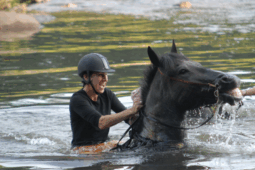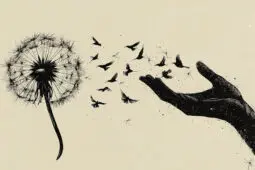Latest
Psychotherapy's Digital Companion
Using AI to Create Personalized Rituals, Practices, and MoreWhat if clients had a way to stay connected to therapy between sessions? AI could be a way to reinforce what therapists are already doing. Read more
Why Some Autistic Adults Go No-Contact
My 26th Year of PeaceGoing no-contact is a last-resort boundary some autistic adults set when other attempts to set limits with family members have failed. Read more
Why Gen-Alpha Slang Matters More Than You Think
Exploring What It Really Means in TherapyTherapists working with adolescents and teens don't need to be fluent in Gen-Alpha slang: they need to be curious without being theatrical. Read more
Year-End Financial Moves Every Therapist Should Know
Practical Ways to Reduce Stress, Lower Your Taxes, and Start 2026 StrongA few focused, well-timed decisions can help therapists meaningfully reduce their tax liability and ease the transition into next year. Read more
Psychiatry Has a New Hero
Awais Aftab Envisions a Humbler Approach to Mental IllnessPsychiatrist Awais Aftab has been inviting the most prominent thinkers in psychiatry to move beyond familiar narratives, embrace complexity, and change the... Read more
Using Psychodrama to Break the Trauma Loop
A Tool for Healing Adult Children of AddictsFor adult children of addicts who've distanced themselves from their painful pasts, interventions that require them to show rather than tell can be... Read more
Listen to the November/December 2025 Magazine Issue!
The Year that Reshaped Therapists: Finding Regulation in a Dysregulated WorldListen to the audio version of the November/December 2025 issue of Psychotherapy Networker magazine. Read more
Caring for Clients Without Abandoning Yourself
How to Serve Wisely in a System That Doesn'tMany therapists confuse sacrifice with service. But when the impulse to care crosses into self-abandonment, no one wins. Read more
Confronting "Mom Guilt"
A Tool to Work Through Core EmotionsParental guilt is often misunderstood by clinicians. The Change Triangle can bring this tricky emotion out into the open and help people work through it. Read more
A Case of Disappearing Desire
Two Approaches to a Client with Commitment IssuesSex therapist Tammy Nelson and trauma specialist Frank Anderson take different paths to empower a client struggling with intimacy. Read more
5 Common Factors for Change in Therapy
A New Integrative Treatment FrameworkAcross all our therapeutic modalities, there are elements that most effectively create change. What do these elements have in common, and how can you integrate... Read more
5 Most Popular Therapist Memes
Humor and Insights Your Colleagues Are SharingIn our quest for healing and connection in a chaotic world, a wacky meme can be a powerful tool. Read more
Energy Psychology's Battle for Recognition
A Growing Healing Movement vs APA's Division 12Of all the David-and-Goliath matchups in psychotherapy, few have had as many twists and turns as the one unfolding between energy psychology and the APA’s... Read more
Confusion in Therapyland
Finding Regulation in a Dysregulated WorldA fantastical journey leads an overwhelmed clinician to unexpected interactions with some of our field's leading luminaries, including Ramani Durvasula, Terry... Read more
Flip Through the Magazine
...ON YOUR E-READER!Check out the November/December issue of the digital magazine on the browser of your favorite device—and dive in from cover to cover! Read more
The Year That Reshaped Therapists
Editor's Note: November/December 2025This year has felt different. There's been a lot of dysregulation in the air, and therapists are feeling it alongside their clients. Why are we feeling so... Read more
2025 Best Story Awards
Readers' Choice AwardsDiscover the most popular stories and clinical insights voted on by readers and published in Psychotherapy Networker in 2025. Read more
The Adoption Crisis No One Wants to Name
How Adoptee Mentorship Can Save LivesWhen it comes to adoption, families need preparation that's trauma-informed and racially literate. Read more
What Therapy Demands—and Gives Back
How Healing Happens on Both Sides of the RoomIn therapy, healing is a living process that happens in real time through the courage to stay present and the therapeutic alliance. Read more
A Therapist Returns to Summer Camp
Rediscovering Community and Purpose in the Maine WoodsDecades later, a psychotherapist returns to summer camp, this time as an employee, and discovers the true meaning of growth and community. Read more
My Eating Disorder, My Attachment Trauma
A Therapist's Journey from Suffering to Healing and UnderstandingA trauma expert shares a personal story about her own struggle with disordered eating. Read more
When DNA Testing Rewrites Your Story
Processing Unexpected Genetic Discoveries in TherapyGenetic testing has led to shocking "DNA discoveries"—secrets unburied, followed by pain, grief, and trauma. Here's how therapists can help. Read more
OMG! I’m in Love with a Machine!
AI, Neuroscience, and the Illusion of AttachmentMultiple studies now demonstrate that AI can evoke real emotional responses, and in some contexts, even outperform human support. Read more
Antisemitism and the Trauma of Invalidation
Revealing the Wound Beneath the WoundJewish therapists and clients are experiencing traumatic invalidation of their experiences of antisemitism. Read more
When Silence Feels Dangerous
The Radical Act of Reclaiming Our SpaceSilence has become a rare commodity in today’s world, and we're constantly reaching for something to fill the space. Resisting this isn’t simply a matter... Read more
Lost and Found
A Father Lets Go of a Long-Held SecretAre some things really best left unsaid? Years after a near-death experience, a father contemplates telling his daughter what kept him alive. Read more
Embracing Selfish Forgiveness
How to Help Clients Release a Grievance StoryWhen we’re tormented by resentment toward someone we believe has wronged us, forgiveness can be a form of self-care. Read more
"Wicked" Through an Attachment Lens
How Fiction Holds a Mirror Up to OurselvesStories like "Wicked" can help us create safe rehearsal spaces for emotional exploration, where fictional attachments allow us to experience intense emotion... Read more
Facing the Challenges of Platonic Love
What Therapists Should Stop Ignoring about FriendshipTo shift friendship to its rightful place of importance in our lives, the conventional friendship script needs a dramatic rewrite. Read more
Locked in a Garden with My Client
The Lessons We Learn Under PressureWhat could a therapist possibly learn from nearly being trapped overnight in a strange place? Read more






























